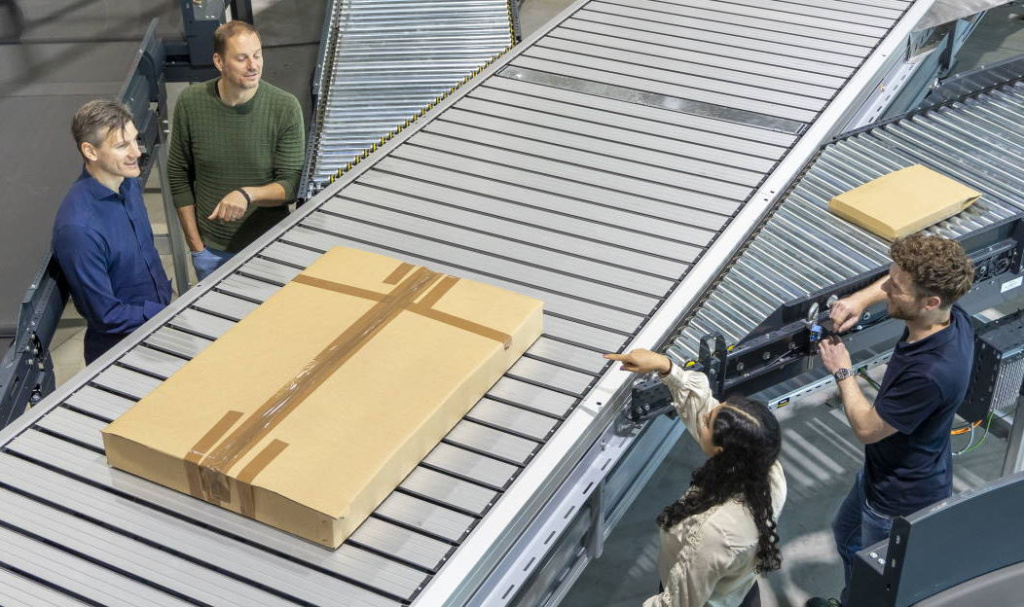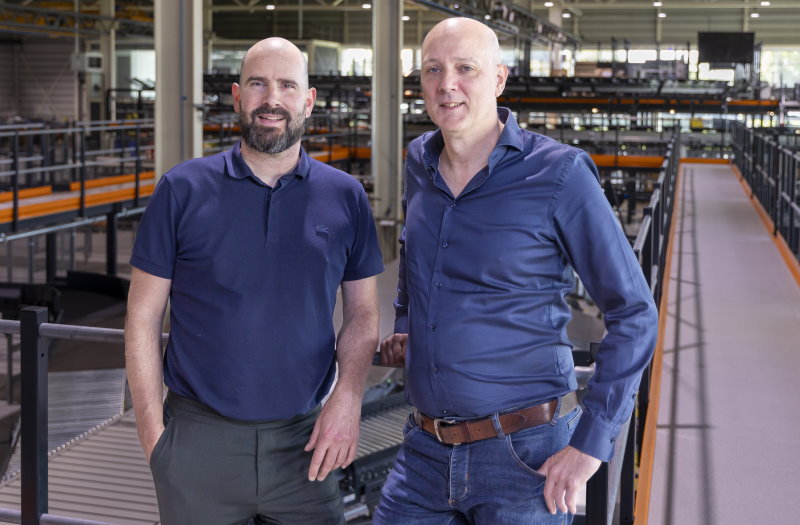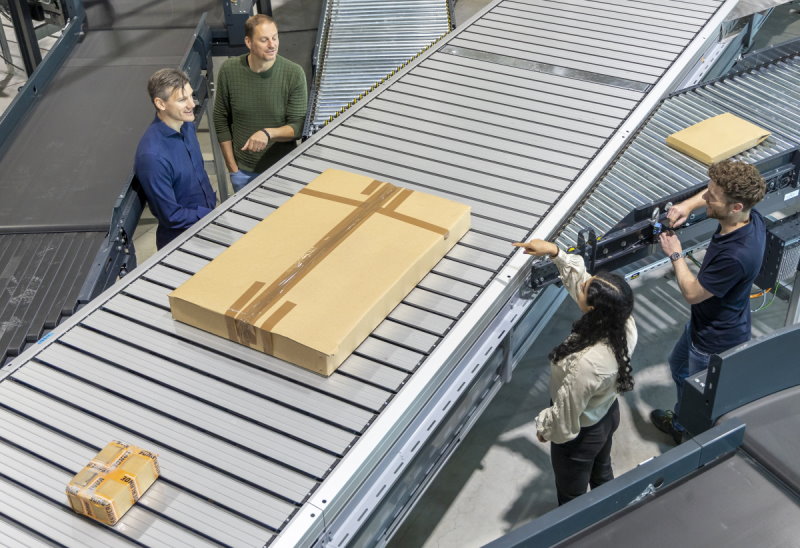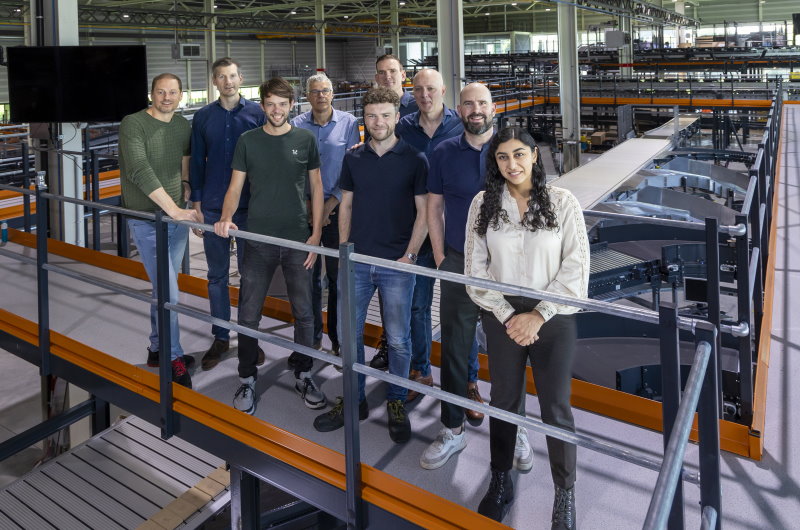
Stepping up to system design
What makes a happy customer? When building a system, it’s crucial to find that out, says Marcel van Houtum, development manager at Vanderlande. “If you understand what your customer really wants, the intended purpose, you can translate that into the functionality that’s actually required. Reasoning about the system in terms of functions, instead of immediately jumping to solutions, will result in a product that makes the customer happy. Functional thinking leads to intended purpose. That’s the philosophy we’re aiming to engrain at Vanderlande through our system design training for young professionals.”
The training is a stepping stone toward becoming a system architect or system integrator. “Sending people straight out of school to a system architecting training is complete overkill. They need to get some experience first, in a smaller yet multidisciplinary role – ie as a system designer,” notes Van Houtum. “The system design training is the perfect first step. It initiates them in the art of systems thinking and teaches them to be creative, to be more innovative in coming up with their own ideas, which also makes their work much more fun.”

Functional systems thinking is key in a multidisciplinary agile environment like Vanderlande, Van Houtum asserts. “Working agile is about creating value in small increments. But what is value? For a customer, it’s what a product can do, how well it does that and for how long. So, it’s about function, performance and quality. That’s why, in a multidisciplinary agile environment, it’s so important to have system designers who understand all the disciplines and together with the domain experts make the right choices to create the most value. This holds not only for Vanderlande but also for many other companies in the region that get their competitive edge by combining hardware and software.”
A few years ago, Van Houtum set up an internal system design training that was recently further professionalized together with TNO-ESI. “Our starting point is that all employees should be able to participate, regardless of their role and location,” elaborates Albert Ellens, responsible for the global technical learning portfolio at Vanderlande. “So, we set out to make Marcel’s training available to our sites worldwide. We started looking for an external partner that could provide a fundamental system design program as both a classroom-based and a virtual solution. After careful consideration of several candidates, we selected TNO-ESI.”
Missing link
The collaboration between the Vanderlande Academy and TNO-ESI has resulted in a 12-week program conveying the fundamentals of system design to 4-5 groups of 2-4 people, typically engineers. “It starts with a 1-hour plenary kickoff for the participants and their group leads,” says ESI project manager Jade Minten. “After selection of the team assignments, the program continues with four modules, each lasting three weeks and consisting of 1-2 hours of online self-study, 4-6 hours of teamwork and 1.5 hours of individual team coaching, concluded by a 1.5-hour intermediary presentation to the other trainees. Everything is rounded off with a 1.5-hour final presentation of the assignments to all participants, the group leads and other company stakeholders. This adds up to a study load of 3-4 hours per week, about 5 working days in total.”
“To maximize the learning effect, we wanted the online part of the learning solution to have a good balance between fundamental theory and practice, while also being highly interactive. TNO-ESI was the only candidate that could meet these requirements,” Ellens explains. “They provide a fundamental training that can be conducted both on-site and online and that allows for practical cases to be brought in. Plus, they’re nearby, they already know Vanderlande very well and they’re very familiar with the high-tech ecosystem, enabling them to extend the offering with a multi-company training where we can learn from others in the industry.”

For TNO-ESI, the system design training was a missing link in its portfolio, says Joris van den Aker, who manages ESI’s competence development program. “We see a lot of people participating in our system architecting training for whom the broad scope of business, customers and technology goes beyond their area of responsibility. The step from a few years of experience to the role of system architect has become so big that it has created room for this intermediate level where you make design choices and trade-offs with a somewhat narrower system perspective.”
In setting up the new training with Vanderlande, TNO-ESI took several elements from its 9-month system architecting program, including the teamwork on a business case, the coaching on the job and the peer reviewing. The A3 method, developed by the University of Twente, Philips and ESI’s Gerrit Muller and applied within many high-tech companies, has been adopted as well to capture system design diagrams concisely on A3-sized papers. “The participants create three deliverables: a project overview, a design overview and a project master plan,” clarifies Minten. “The A3 method helps them break down a complex system into more tangible pieces to streamline their communication with all the stakeholders, not only during the training but hopefully also afterward.”
Success stories
At Vanderlande, the fundamental system design part by TNO-ESI is combined with an in-house follow-up, ie Van Houtum’s original training, which includes one day (equivalent) of preparatory e-learning and four days of embedding the learnings into the logistic automation domain. The pilot kicked off last October with a team from the company’s Barcelona office, a team from the US and two teams from HQ in Veghel. The 10-day program was concluded during the first quarter of this year. “With an average score of 4.18 out of 5, the 17 participants were very positive about this training making them a better system designer,” concludes Ellens.

For many, the training is a real eye-opener, Van Houtum notices. “I hear participants talking about how they’ve learned to look at the product from more perspectives than just their own. They now see that there’s a lot more to our systems than the mechanics or the electronics alone; there’s the software of course but also the views from the customer, the user and the service engineer, for example. Well-rounded system thinkers are indispensable in a multidisciplinary agile environment. These are my main takeaways from the training.”
“The program is very much about shaping system designers within their organizational context,” adds Van den Aker. “During the training, you’re already building all kinds of connections with the people around you. In the online environment, we see that participants easily make contact, both with each other and with the trainer.”
Vanderlande is already reaping the benefits of the training. Slowly but surely, the success stories are coming in, reports Van Houtum. “In a couple of projects, including our Linesorter, Shuttles, Steerable Wheels and Vertisorter, the addition of system designers has had a very positive effect. It has considerably improved the interaction with both internal and external stakeholders, and thereby the quality of the specifications, which in turn makes our experts happy. It also allows us to delegate functional responsibility to our global teams, increasing their sense of ownership. It has created a positive vibe all around.”

Added advantage
After the successful pilot at Vanderlande, TNO-ESI is looking to organize a multi-company edition for the fundamental part of the training after the summer. “We’re currently in talks with several interested parties to participate with teams of 2-4 people,” says Minten. “We aim to start in September or October.”
Vanderlande will definitely be present. “They can count us in. I’ve got more than twenty candidates lined up already, including one or two teams from our site in Pune, India,” Van Houtum indicates. “Such a multi-company edition has the added advantage that our participants can learn a lot from their interaction with industry peers. They get to see how other high-tech companies are dealing with certain system challenges. Vice versa, they have to explain our challenges in plain and simple terms to them – a key ability for a system designer.”
It’s up to the participating companies whether, like Vanderlande, they incorporate TNO-ESI’s fundamental training into a more comprehensive program of their own. “With the support of senior system architects in the organization, it’s relatively easy to add such a company-specific embedding,” Van den Aker believes. “Having attended the fundamental part once or twice, those seniors should even be able to take over from us and give the whole training themselves.”
This article was written in close collaboration with TNO-ESI.





